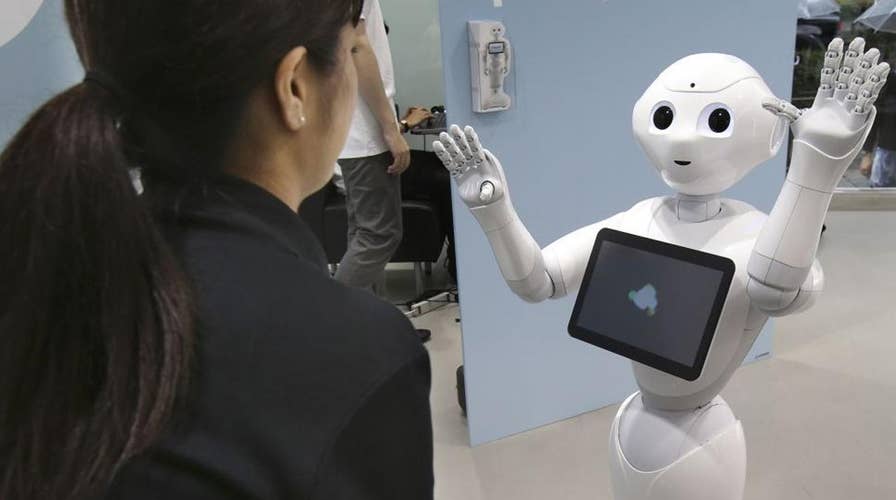New worries about robots taking jobs
Study: More than three-out-of-four teens say they're concerned about having a successful career because of automation and global competition
The labor force that we recognize today won’t be the labor force of my 8-year-old daughter.
Everywhere I go, when I talk with to academics and business people, the theme of the radical pace of change emerges. Technology is driving innovation, which in turn is driving massive change in our labor force.
In just three years, by 2020, a whopping 43 percent of the U.S. labor force will be freelance, up from 34 percent or 53 million last year. The gig economy will be a reality for my daughter, and I wonder if that’s going to be a good place for her to earn a living.
AI—artificial intelligence—is the latest buzzword of innovation in almost every industry. Much of it will indeed help us better synthesize data to serve customers of all kinds, from C-suite executives to patients in emergency rooms. But it’s accompanied by a host of moral considerations, including the “machine question,” as MIT’s David J. Gunkel puts it: Will a driverless car choose to hit the couple crossing the street in front of it, or endanger itself to protect the couple by swerving and crashing into a wall?
In just three years, by 2020, a whopping 43 percent of the U.S. labor force will be freelance, up from 34 percent or 53 million last year.
By the early 2030s, 38 percent of jobs in America will be replaced by robots and AI, says PwC. The trend will particularly affect the retail financial services industry, where employment has certain routine qualities that lends itself to substitution by automation.
When I made the shift from the corporate world to Silicon Valley to be among the handful of women CEOs starting businesses, it was a choice.
Today, becoming a freelancer or consultant is becoming the norm. You’re forced into it. Whether it results from exiting a company or trying to juggle work with caring for children or an aging parent, it’s a tenuous position to say the least.
Once out of the conventional workforce, it’s hard to get back in, underscored by new “returnship” programs.
With all of these dynamics at work, how do we give some structure—and even confidence—to the next generation to succeed? How do we begin to really prepare them (and ourselves) for what lies ahead?
First, we can’t stifle innovation as a means to protect existing jobs; innovation is essential to competitive success. It’s far better to expand training in the art and science of running one’s own business, since many more people will require such skills.
Second, if more people will be running their own businesses, then access to capital will have to be expanded. With just 7 percent of venture capital going to women-owned firms and about 1 percent to under-represented minority-founded companies, there is an enormous gap that needs to be filled. People who embrace the entrepreneurial spirit that shaped America are taking a larger share of the risks in business; they deserve a larger slice of the capital to do so.
In particular, we need to better equip the next generation of girls. People often ask me: why is it that progress for women in the business world has lagged over the last 20 years? The answer is too long to explain here, but the numbers are undeniable. Just 6 percent of Fortune 500 companies are led by women, only 36 percent of entrepreneurs are women, and just 14 percent of engineers are women.
If we don’t change that and prepare our girls for the shifts ahead, they’ll be left in the dust—and so will our economy. We need to re-invent the way we teach, not just in schools but in the wider world outside.
At a national high school program called Girls with Impact, where I serve as CEO, we are seeing the results of bringing an MBA-like interactive program to teenage girls. Not only are they getting the “business conditioning” they sorely need, as one father described it, they are building a host of other skills critical to being true leaders. As one member put it, “I feel powerful” having begun to build a business – to see her potential come to life.
This Labor Day is a time of reflection: How can we as a nation provide the underpinnings we so desperately need – especially for the next generation? Let’s use this time to use our talents toward that.

